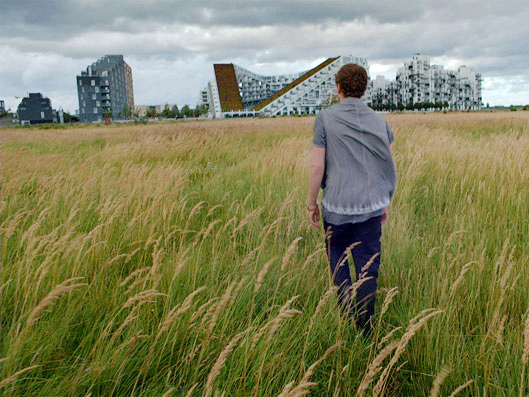(THIS ARTICLE IS MACHINE TRANSLATED by Google from Norwegian)
Film Near and Elsewhere is a meditation on utopias. Staying within the frame of our time mentality becomes less a glowing vision of possible future paradises than a critical and concerned overview of a dangerous level of ideological confusion. The directors Sue-Alice Your way og Edward Zorzenoni makes a credible diagnosis for our troubled era by gathering an impressive group of thinkers – from the Nobel Prize-winning Belarusian novelist and oral storyteller Svetlana Aleksijevich to the German futurist Matthias Horx.
They all seem to agree on the reasons: a globalized planet linked by complicated technology that blind faith in the market's invisible hand has brought to a breaking point.
Seductive utopias
The notion of utopia as a seductive but reductive escape from reality is a fundamental nerve in the film. Italian sociology professor Elena Esposito points out that these utopian visions are not necessarily about the future, but about how we deal with the uncertainty of the present.
The concept of "money" serves as an assurance that we will be able to satisfy needs that are not yet defined when we commercialize parts of our existence through systems such as "ownership of our own home" in the hope of gaining greater freedom and security. But even as we invest in such performances, technological developments have created a large number of variables and made it difficult to predict the results.
As Horx elaborates, the human brain is not yet sufficiently developed from its more primitive functions on the savannah and is thus unable to handle such network-created complexity. Out of this has come a "mental mass inflammation" in society, which causes overreactions, decorientering and fear. This has led to injuries, such as populism.
Utopian dreams are worth zero without practical follow-up.
A utopia involves limiting the diversity of the world in favor of a central, governing view, while a strong society will always appreciate contradictions. Near and Elsewhere offers very general and abstract thought about utopias, it is floating and fragmentary, and gives few concrete examples.
An exception comes from author Aleksijevich, who made it his life's work – using testimonies – to map the dreams and lost illusions of the generations who lived in the Soviet era and during the fall of the regime. She remembers the false euphoria that gripped her region in the early 90s, when they believed that the fall of communism would lead to freedom for the citizens the following day. What came was a vulgar, materialistic era, with bandits and oligarchs who plundered the country and were keen to fill the void that arose. This could happen because of a fundamental lack of understanding of what freedom really is, and how to work to achieve it.
Dissident writer Aleksandr Solzhenitsyn #s The Gulag Archipelago , which depicts Soviet Union as an elaborate prison system, could finally be brought out of oblivion and released publicly, but interest in the social values and warnings it contained was dead. While people with only superficial knowledge of post-Soviet history will hardly find anything startling in these claims, the notion that utopian dreams are worthless without practical follow-up is important to note.
Eurocentric tunnel vision
However, the film contains no practical wizards for the journey ahead, though it does emphasize that this is part of the problem that we have ourselves. The German philosopher and cultural scientist Joseph Vogl suggests that all-encompassing capitalism has led to our times lacking political imagination, a failure that supports the boom of popular disaster films from Hollywood. It is easier to imagine the end of the world than a whole new way of structuring society.
It is a subcommunicated kind of side of the filmmakers that the "experts" they consulted are largely superstars from the book world. Pictures of talking heads in front of the ivory tower (a Puritan white classroom for Vogl, and towering bookshelves for Esposito) implies that armchair hypotheses and the scholars' knowledge are what create change; grassroots on the ground – in all its murky imperfection – it is not possible to spot, not even within one continent the film, with its Eurocentric tunnel vision, focuses on.
The film is a meditation on utopias.
Instead of the involvement of the slavery masses (which would be a power resource in any new social order), or simply the organizers behind it, shows Near and Elsewhere segments of poetic fiction. Young fortune hunters from another world, washed up on the earth's beaches, wander – and sometimes dance – through an urban landscape of smart and modern architecture, in search of a future as designers. "Our role here is to be utopian," says one of these confused, unruly travelers. These scenes are steeped in obscure science-fiction clichés and arguably the weakest in the film, and underline the directors' inability to see any way out of the present paralysis they describe.
Climate change is the most pressing threat to a sustainable future for humanity. Unless we are able to reverse these changes, they will render any other concern for existence meaningless. But this, too, is completely absent in a film centered on the status of utopia as ideal. Still, by at least directing our attention to the question of what future we want, this movie is a warning call. However, it is up to us to activate the power of action in ourselves and in our communities.






